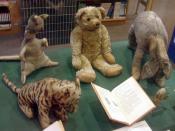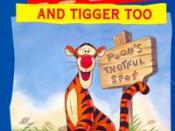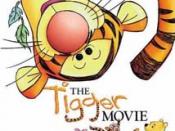Taoism and of Confucianism as seen through Tigger in The Tao of Pooh The main principles of the religions Taoism and Confucianism clash greatly. The book, The Tao of Pooh, describes Taoism by comparing it to the A. A. Milne character Winnie-the-Pooh. A. A. Milne's character of an energetic, action-orientated tiger, Tigger, is an ideal example of a follower of Confucianism.
The most striking principle of Confucianism that Tigger embodied is his self image is that he could accomplish anything he wanted to. Confucianists think they can overcome any obstacle, solve any problem, and achieve any goal. Tigger claimed to be able to climb trees better than anyone, but when he got up there, he couldn't come down! Pooh addressed this quality in his Cottleson Pie Principle when he said, "A fish can't whistle and neither can I."ÃÂ Pooh knew his limitations and operated day-to-day within them, as any Taoist would.
He was peaceful with his limitations. Tigger was exactly the opposite of what the ideal Taoist would be. You could also say that this quality of Tigger fits under another idea addressed in the Cottleston Pie Principle. Pooh said that, "A fly can't bird, but a bird can fly."ÃÂ Pooh understood that he was not able to do everything, because that is just the way he was. Tigger thought he could do everything, as shown in his thinking he was a tree climber.
Another concept pointed out by Tigger and Pooh is the Taoist thought that "things are as they are."ÃÂ Pooh accepted this entirely, as do Taoists. Tigger's whole character was defined by his actions, as is true for of Confucianists. As an example of this, consider the story of Eeyore being "bounced"ÃÂ into the river by Tigger. Rabbit decided to teach Tigger to stop bouncing by...


